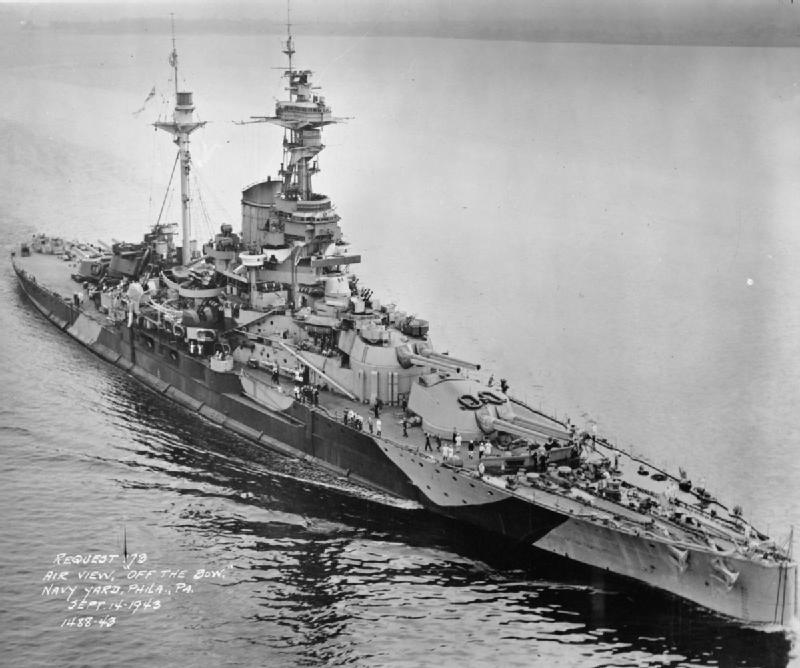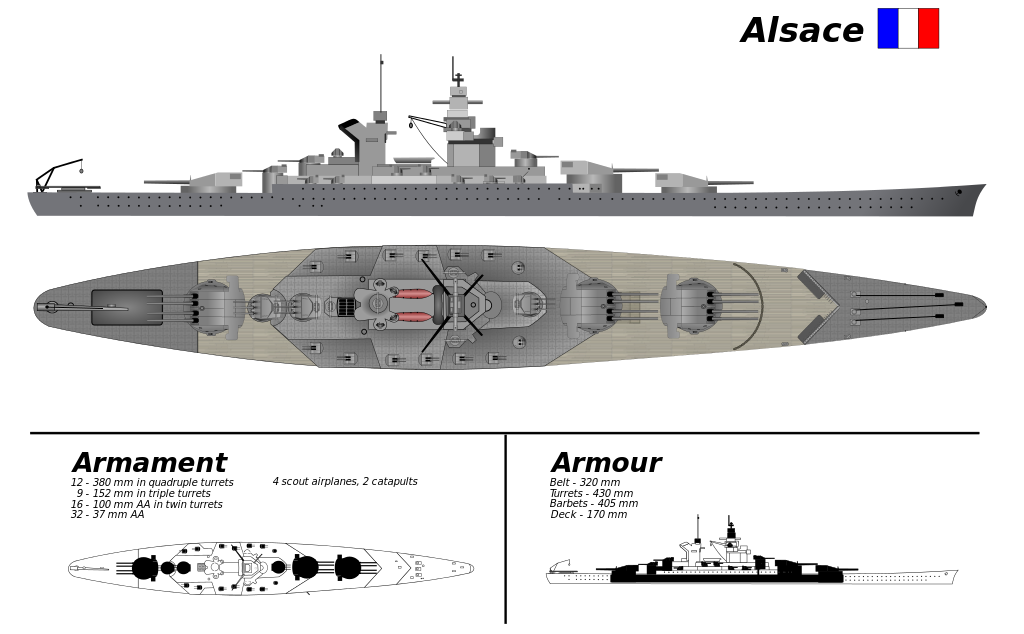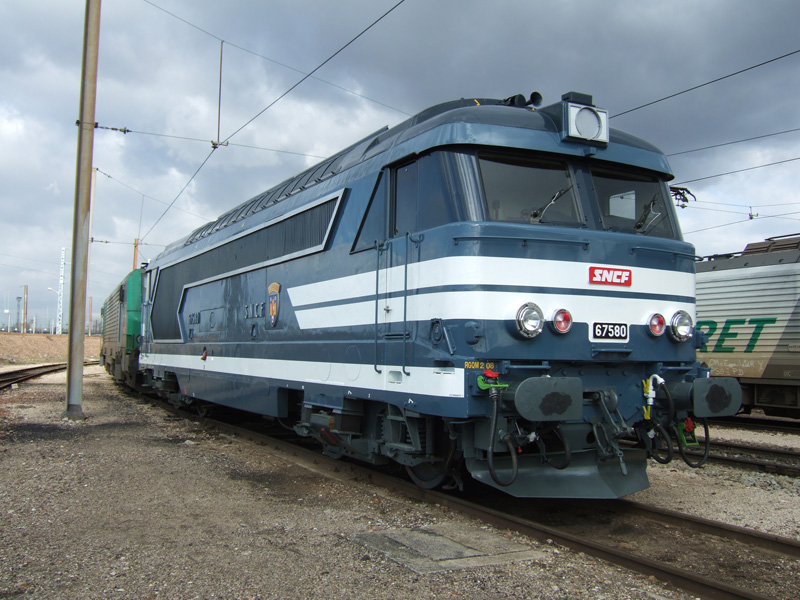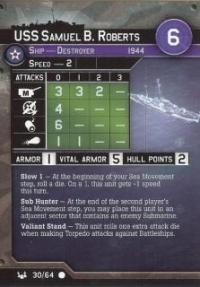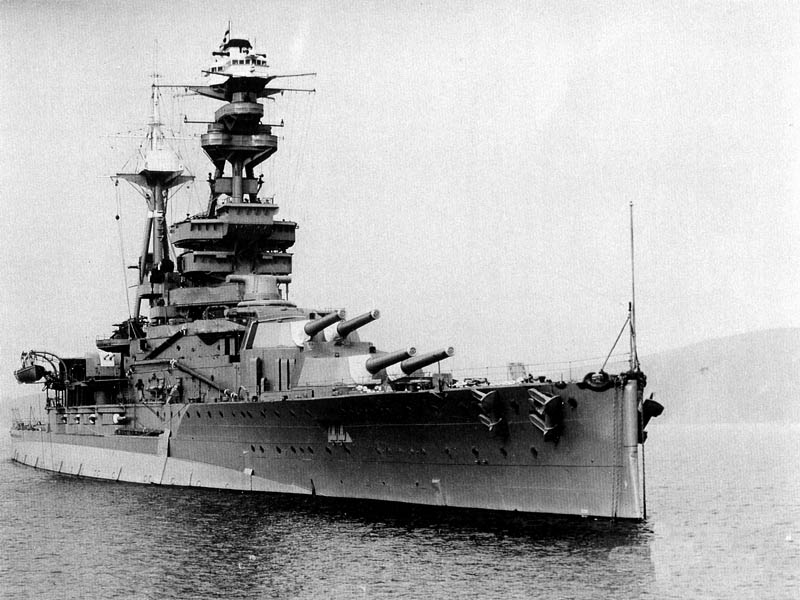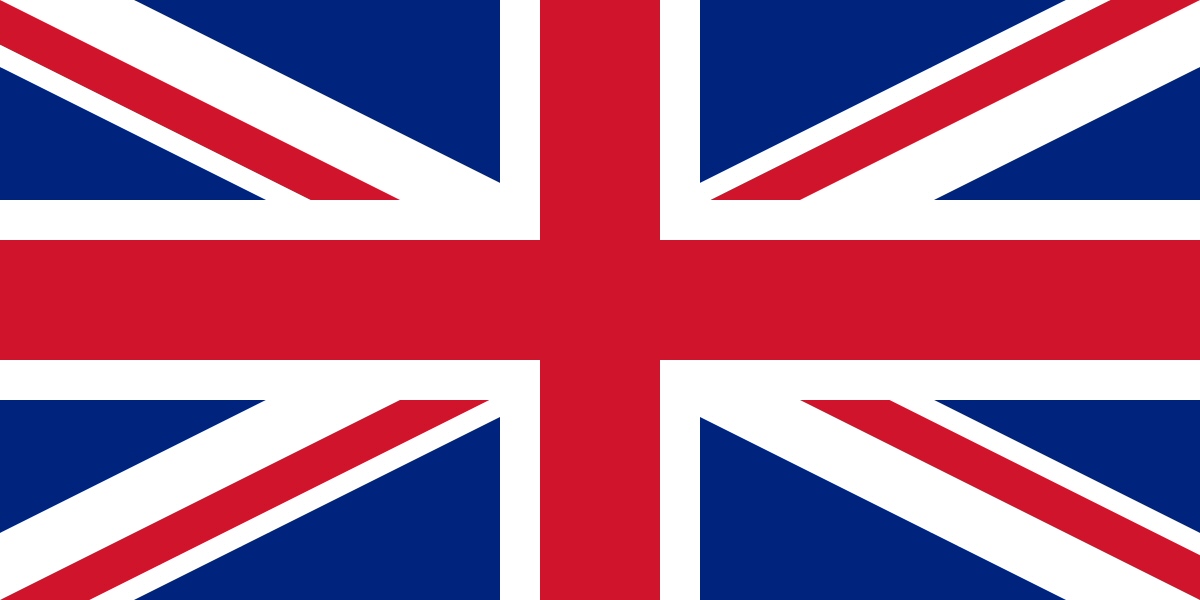HMS Royal Sovereign
| Name | HMS Royal Sovereign |
| Nationality | United Kingdom (Details) |
| Pennant/Designation | 05 |
| Period | World War II |
| Type | Battleship |
| Warship Class | Revenge (Details) |
| Year Launched | 1915 |
| Year Commisioned | 1916 |
| Renamed As | Arkhangelsk (Details) |
| Last Year Active | 1944 |
| Status | Sold |
| Source of Text | Wikipedia |
| Credit Link | Link |
History:
HMS Royal Sovereign (pennant number 05) was a Revenge-class (also known as Royal Sovereign and R-class) battleship of the Royal Navy displacing 29,970 long tons (30,450 t) and armed with eight 15-inch (381 mm) guns in four twin-gun turrets. She was laid down in January 1914 and launched in April 1915; she was completed in May 1916, but was not ready for service in time to participate in the Battle of Jutland at the end of the month. She served with the Grand Fleet for the remainder of the First World War, but did not see action. In the early 1930s, she was assigned to the Mediterranean Fleet and based in Malta.
Unlike the Queen Elizabeth-class battleships, Royal Sovereign and her sisters were not modernised during the interwar period. Only minor alterations to her anti-aircraft battery were effected before the outbreak of World War II in September 1939. Assigned to the Home Fleet, the ship was tasked with convoy protection until May 1940, when she returned to the Mediterranean Fleet. Royal Sovereign was present during the Battle of Calabria in July 1940, but her slow speed prevented her from engaging the Italian battleships. By March 1942, she was assigned to the Eastern Fleet in the Indian Ocean, but after the Indian Ocean raid by Admiral Nagumo's Kido Butai, the ship was withdrawn to eastern Africa to escort convoys. In January 1944, she returned to Britain, and in May the Royal Navy transferred Royal Sovereign to the Soviet Navy, which renamed her Arkhangelsk. She then escorted Arctic convoys into Kola until the end of the war. The Soviets returned the ship in 1949, after which she was broken up for scrap.
Unlike the Queen Elizabeth-class battleships, Royal Sovereign and her sisters were not modernised during the interwar period. Only minor alterations to her anti-aircraft battery were effected before the outbreak of World War II in September 1939. Assigned to the Home Fleet, the ship was tasked with convoy protection until May 1940, when she returned to the Mediterranean Fleet. Royal Sovereign was present during the Battle of Calabria in July 1940, but her slow speed prevented her from engaging the Italian battleships. By March 1942, she was assigned to the Eastern Fleet in the Indian Ocean, but after the Indian Ocean raid by Admiral Nagumo's Kido Butai, the ship was withdrawn to eastern Africa to escort convoys. In January 1944, she returned to Britain, and in May the Royal Navy transferred Royal Sovereign to the Soviet Navy, which renamed her Arkhangelsk. She then escorted Arctic convoys into Kola until the end of the war. The Soviets returned the ship in 1949, after which she was broken up for scrap.
Class:
The Revenge-class battleships (listed as Royal Sovereign class in several editions of Jane’s Fighting Ships, as with the 1919 and 1931 editions, and sometimes also known as the "R" class) were five battleships of the Royal Navy, ordered as World War I loomed, and launched in 1914–1916. There were originally to have been eight of the class, but two were later redesigned, becoming the Renown-class battlecruisers, while the other, which was to have been named HMS Resistance, was cancelled.
The ships of the class were slower and smaller than the preceding Queen Elizabeth-class battleships. Despite sometimes being referred to as the "Royal Sovereign class", official documents from World War I clearly state that the class was known as the Revenge class; the confusion apparently even extended to the Grand Fleet‘s commander, Admiral of the Fleet Jellicoe, as they are mentioned in both fashions in his voluminous The Grand Fleet 1914–1916: Its Creation, Development and Work.
The ships of the class were slower and smaller than the preceding Queen Elizabeth-class battleships. Despite sometimes being referred to as the "Royal Sovereign class", official documents from World War I clearly state that the class was known as the Revenge class; the confusion apparently even extended to the Grand Fleet‘s commander, Admiral of the Fleet Jellicoe, as they are mentioned in both fashions in his voluminous The Grand Fleet 1914–1916: Its Creation, Development and Work.
Nationality:
The United Kingdom, made up of England, Scotland, Wales and Northern Ireland, is an island nation in northwestern Europe. England – birthplace of Shakespeare and The Beatles – is home to the capital, London, a globally influential centre of finance and culture. England is also site of Neolithic Stonehenge, Bath’s Roman spa and centuries-old universities at Oxford and Cambridge.
Item created by: gdm
on 2019-03-27 09:51:32
Last edited by: gdm on 2019-03-27 09:52:03
If you see errors or missing data in this entry, please feel free to log in and edit it. Anyone with a Gmail account can log in instantly.
Last edited by: gdm on 2019-03-27 09:52:03
If you see errors or missing data in this entry, please feel free to log in and edit it. Anyone with a Gmail account can log in instantly.


